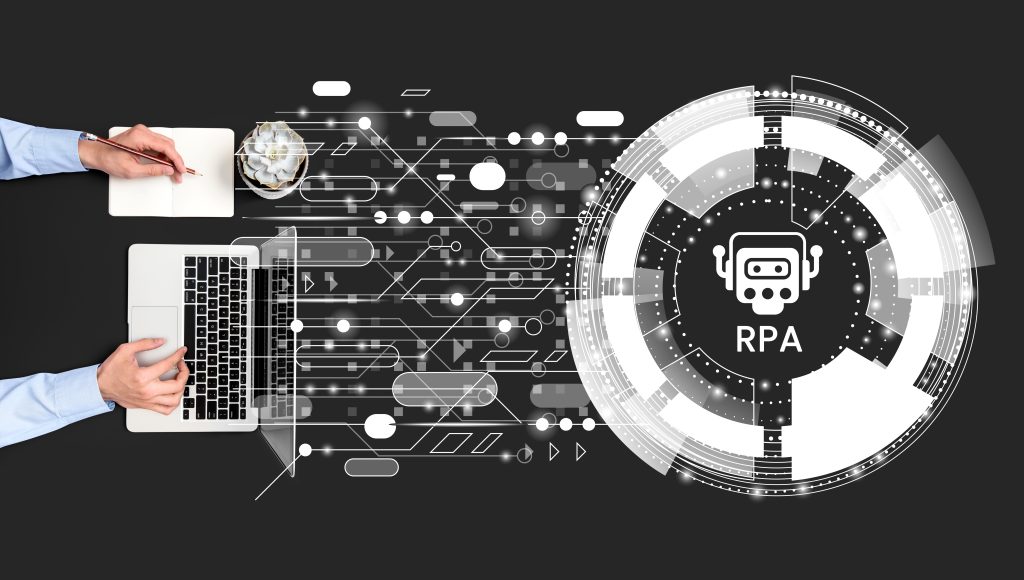To remain relevant in today’s fast-paced digital landscape, businesses are continuously seeking ways to enhance productivity, reduce operational costs, and maintain a competitive edge. Enter Hyperautomation—a transformative trend that combines Artificial Intelligence (AI) with automation technologies such as Robotic Process Automation (RPA), machine learning, and advanced analytics. Hyperautomation extends beyond the automation of individual tasks; it integrates AI-driven decision-making to automate end-to-end workflows, allowing enterprises to accelerate operations, streamline complex processes, and scale efficiently without increasing headcount.
This article explores how hyperautomation is reshaping enterprise workflows, its benefits, and how businesses can leverage AI-driven automation to achieve operational excellence.
The Concept of Hyperautomation
Hyperautomation goes beyond traditional automation, which is often limited to rule-based, repetitive tasks. It brings AI into the equation, enabling organizations to automate more complex, decision-based processes. Hyperautomation integrates AI and automation tools across an organization, ensuring that processes are not just faster but also smarter and more adaptable.
- AI-Powered Decision-Making: With AI integrated into automation platforms, hyperautomation enables systems to make decisions based on data analytics, patterns, and real-time insights, allowing for more dynamic operations.
- AI-Scalability: By automating both repetitive and complex tasks, hyperautomation allows businesses to scale processes seamlessly. The combination of AI and automation tools enables businesses to handle growing workloads without the need for significant increases in personnel.
Benefits of AI-Driven Hyperautomation
Streamlined Operations
AI-driven hyperautomation optimizes end-to-end workflows by automating repetitive tasks and decision-making processes. It ensures that operations run efficiently by minimizing delays, reducing manual interventions, and optimizing resource allocation.
- Use Case: A manufacturing company uses AI-enhanced RPA to automate inventory management, from order placement to supplier communications. By analyzing real-time stock levels and customer demand, the system can automatically adjust orders to avoid overstocking or stockouts, ensuring smooth production cycles.
Cost Reduction and Operational Efficiency
Hyperautomation helps businesses cut costs by reducing the reliance on manual labor and increasing the speed and accuracy of tasks. By automating even complex processes, companies can save on operational costs while improving output quality.
- Use Case: A financial services firm integrates AI-powered RPA to automate client onboarding and KYC (Know Your Customer) processes. By leveraging machine learning to verify documents, check compliance, and validate data, the firm reduces manual processing time by 70%, cutting costs and improving customer satisfaction.
Real-Time Data Analysis and Decision-Making
One of the most significant advantages of AI-driven hyperautomation is the ability to make real-time decisions based on up-to-the-minute data. AI can analyze vast amounts of data quickly and provide actionable insights, allowing businesses to respond to market changes or operational challenges faster than ever before.
- Use Case: A logistics company uses AI-driven hyperautomation to manage its fleet. By analyzing traffic data, vehicle health, and delivery schedules in real time, the system adjusts routes dynamically to minimize delays and fuel consumption.
Scalable Workforce Augmentation
Hyperautomation allows businesses to scale their operations without significantly increasing headcount. AI tools work alongside human employees, handling repetitive and time-consuming tasks, freeing up personnel to focus on higher-value strategic work.
- Use Case: A healthcare provider integrates AI into their scheduling systems, automating appointment bookings, patient reminders, and follow-ups. This reduces administrative burden on staff, allowing them to focus on providing quality care.
Challenges in Implementing Hyperautomation
Integration with Legacy Systems
Many enterprises still rely on outdated legacy systems that can be challenging to integrate with modern AI and automation tools. Hyperautomation initiatives require seamless integration between existing infrastructure and new technologies to avoid data silos and inefficiencies.
Complexity of Automation Management
As businesses adopt hyperautomation, managing the complexity of multiple automated processes across departments can become a challenge. Ensuring that all systems communicate effectively and that there is no duplication of tasks or data requires careful planning and a robust management strategy.
Data Security and Compliance
As hyperautomation relies heavily on data, ensuring the security of that data is paramount. Organizations must invest in strong data governance and compliance measures to avoid security risks and ensure that all automated processes adhere to relevant regulations, especially in industries like finance and healthcare.
How SeamFlex Can Assist
At SeamFlex, we understand that navigating the complexities of AI-driven hyperautomation requires a clear strategy and expert guidance. Our team specializes in helping businesses implement hyperautomation solutions tailored to their specific needs. Here’s how we can help:
We begin by assessing your current workflows to identify which tasks and processes can benefit most from hyperautomation. By understanding your pain points and operational challenges, we develop a customized strategy that ensures maximum ROI.
SeamFlex helps businesses integrate AI-driven automation platforms into their existing infrastructure, ensuring seamless communication between systems. Our approach prioritizes reducing friction, enabling real-time data exchange, and ensuring all departments are aligned.
We build scalable automation solutions that grow with your business, enabling you to handle increased workloads without compromising efficiency or quality. Whether it’s RPA, machine learning, or advanced analytics, SeamFlex ensures that your automation tools are adaptable and future-proof.
Hyperautomation is not a one-time project. SeamFlex provides ongoing monitoring and optimization of your automated workflows, ensuring continuous improvements in performance, security, and compliance.
Final thoughts...
AI-driven hyperautomation is transforming enterprise operations, providing businesses with the tools to scale, streamline processes, and enhance decision-making. By combining AI, RPA, and other automation technologies, hyperautomation enables organizations to operate more efficiently and cost-effectively. As companies look to stay competitive, hyperautomation offers a clear path to driving innovation and achieving long-term operational excellence.
Ready to take your enterprise operations to the next level with AI-driven hyperautomation? Contact us today to explore how we can help you streamline processes, reduce cost, and scale efficiently.


